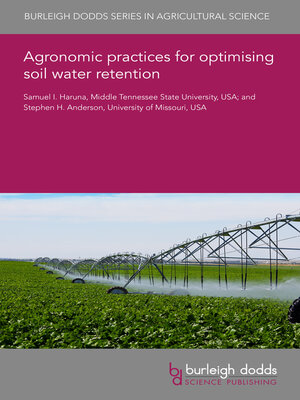Agronomic practices for optimising soil water retention
ebook ∣ Burleigh Dodds Series in Agricultural Science
By Dr Samuel I. Haruna

Sign up to save your library
With an OverDrive account, you can save your favorite libraries for at-a-glance information about availability. Find out more about OverDrive accounts.
Find this title in Libby, the library reading app by OverDrive.



Search for a digital library with this title
Title found at these libraries:
| Library Name | Distance |
|---|---|
| Loading... |
Soil water retention is an important factor that influences cropping systems and environmental sustainability and can be affected by various agronomic practices. Agronomic practices including tillage, cover cropping, crop rotation, and animal grazing practices have been implemented over several centuries to enhance crop productivity by improving soil–seed contact, reducing weed competition, increasing nutrient availability and cycling, and improving animal health. Over time and as a result of technological advancements and an increasing global human population, these practices have gradually evolved to include the use of mechanised equipment aimed at reducing human labour and increasing productivity. However, these advancements in agronomic practices can influence water infiltration and retention. This chapter discusses these practices and their influence on water infiltration and retention. Suggestions are also made on how these practices can be used to optimise soil water retention and availability.







